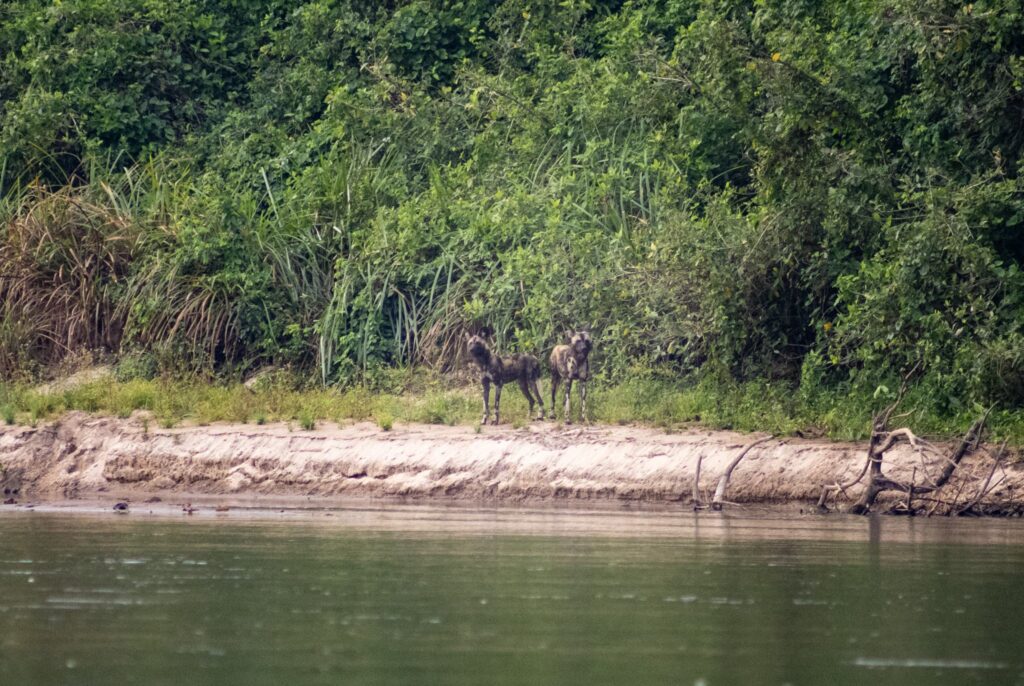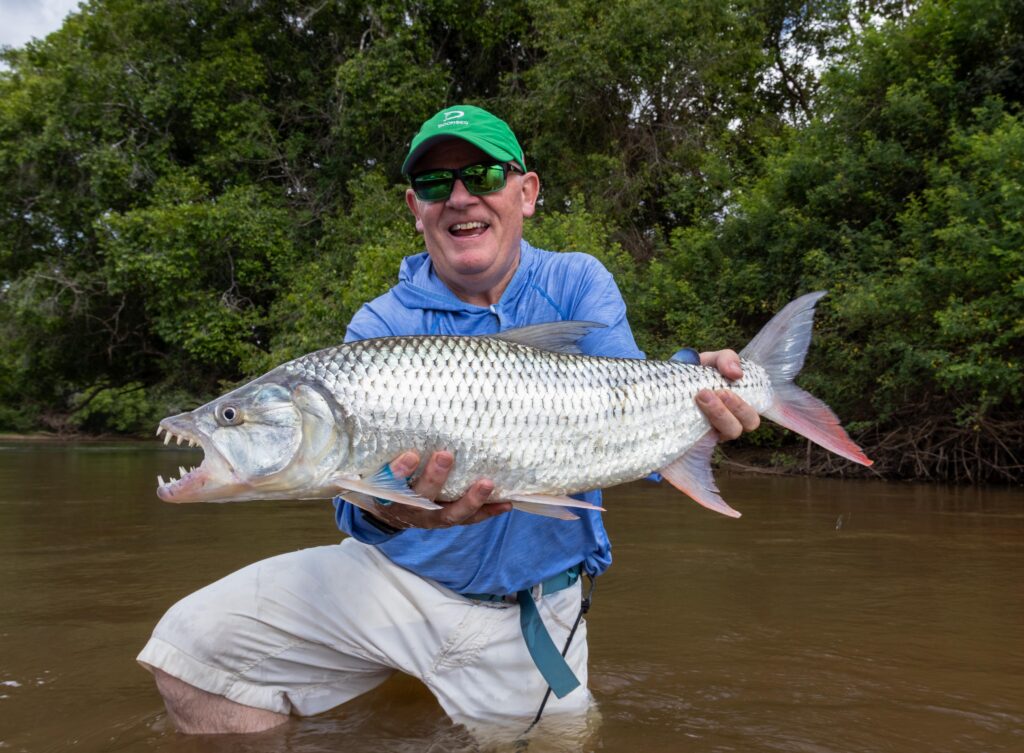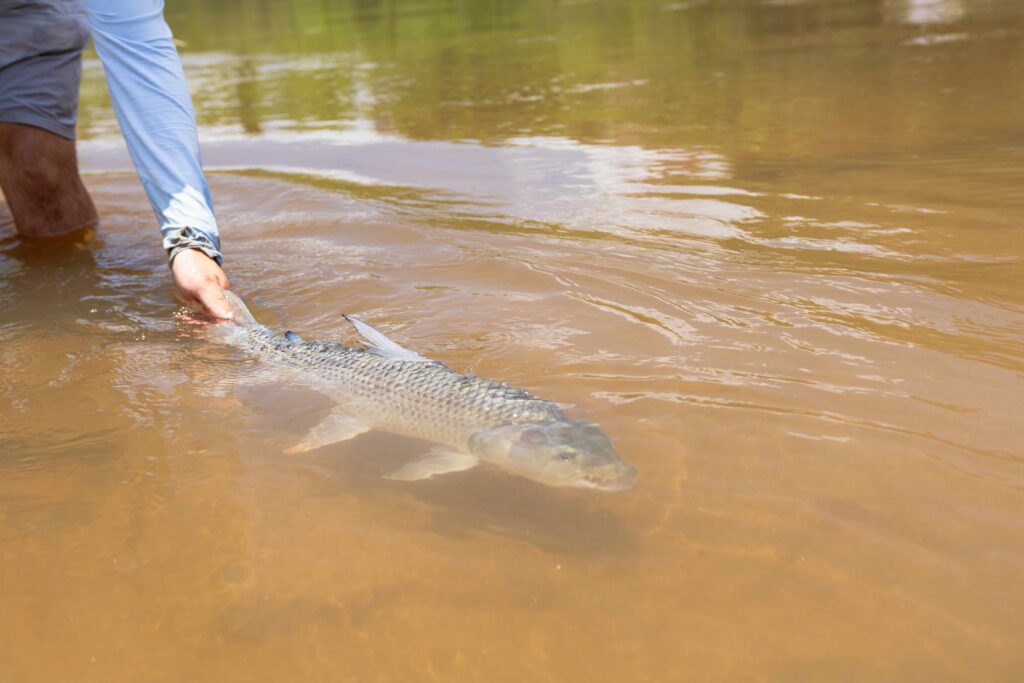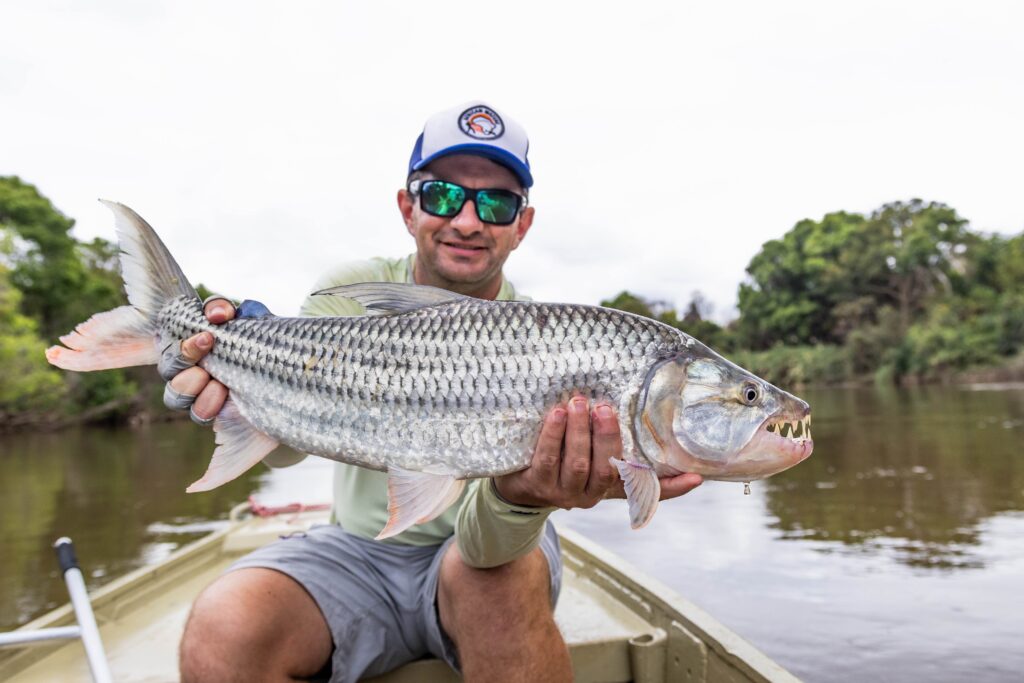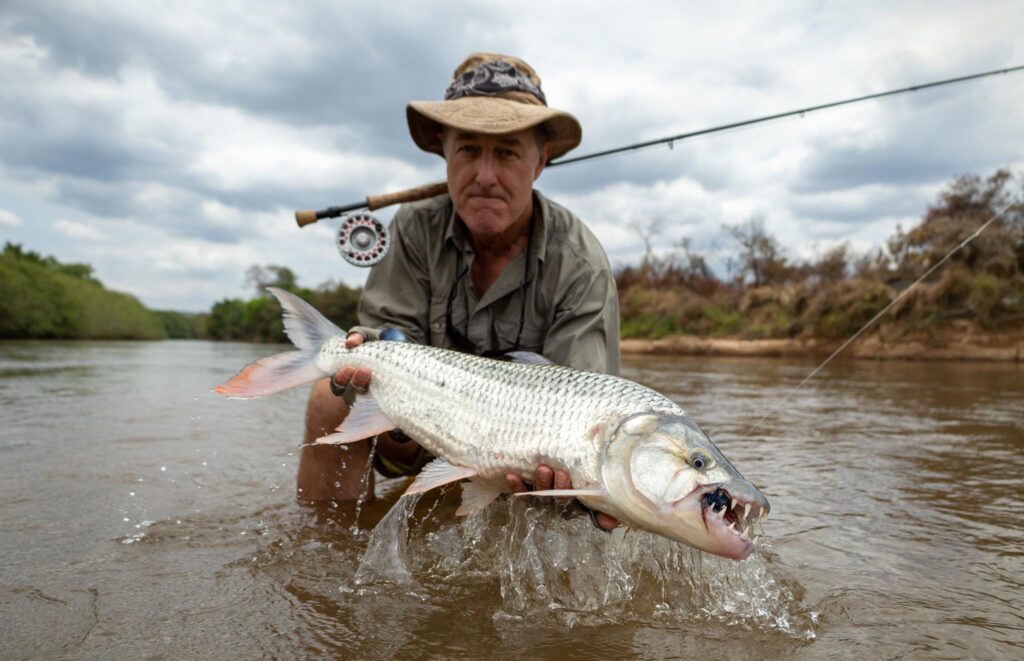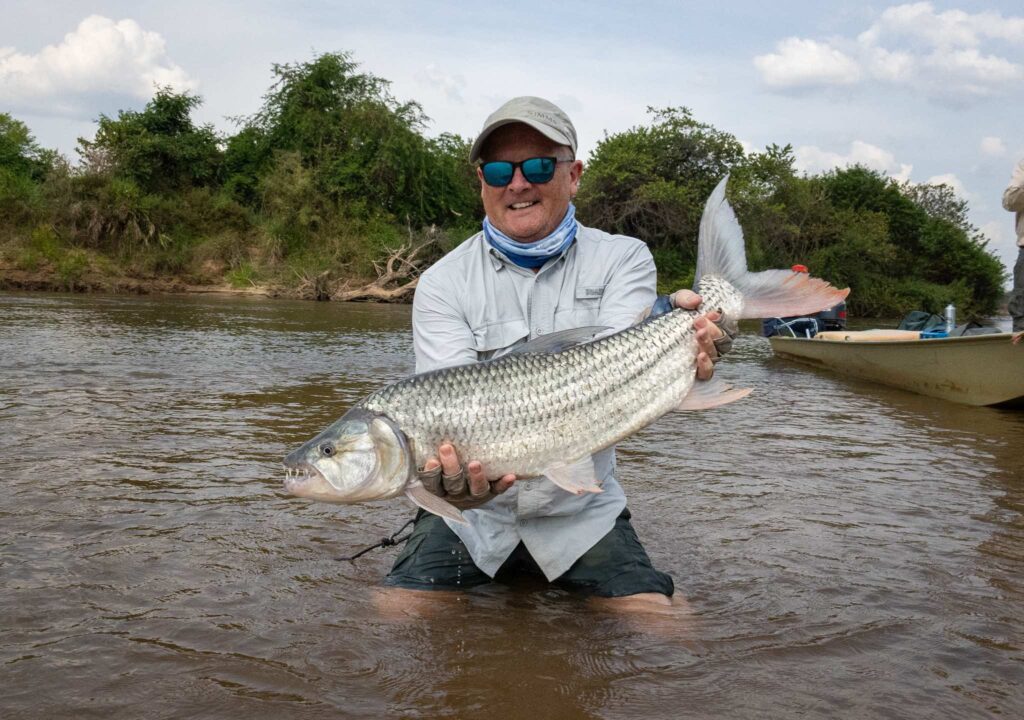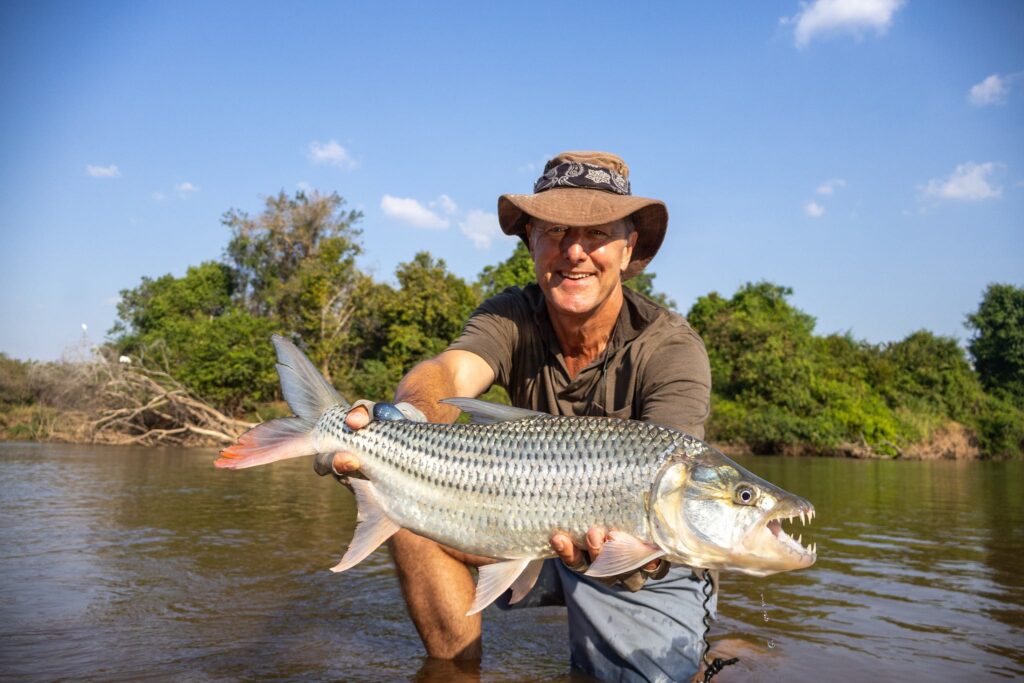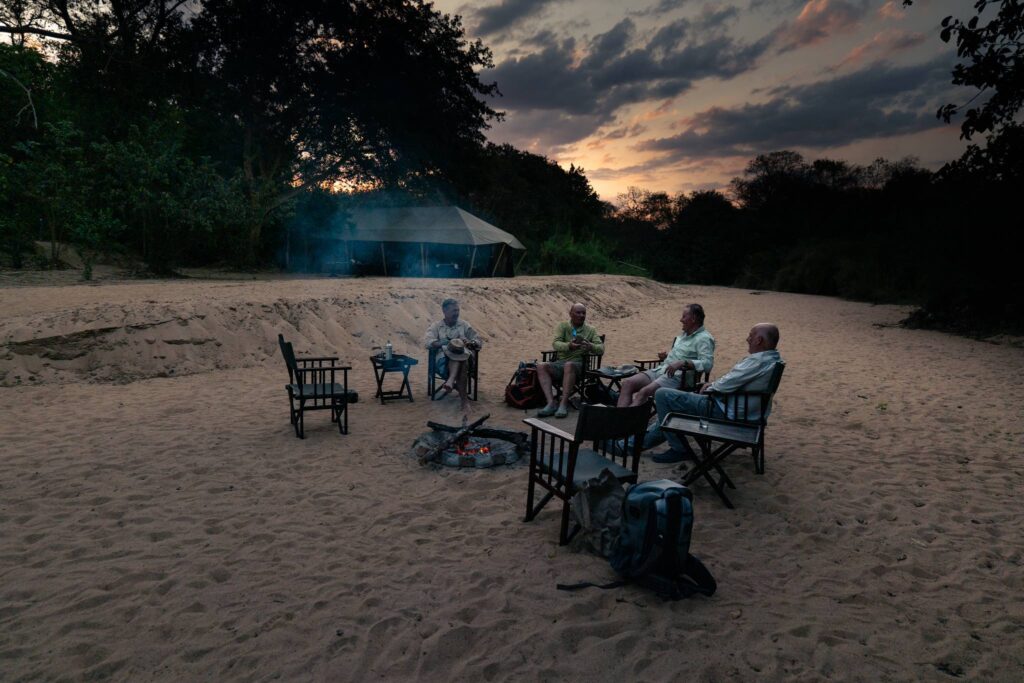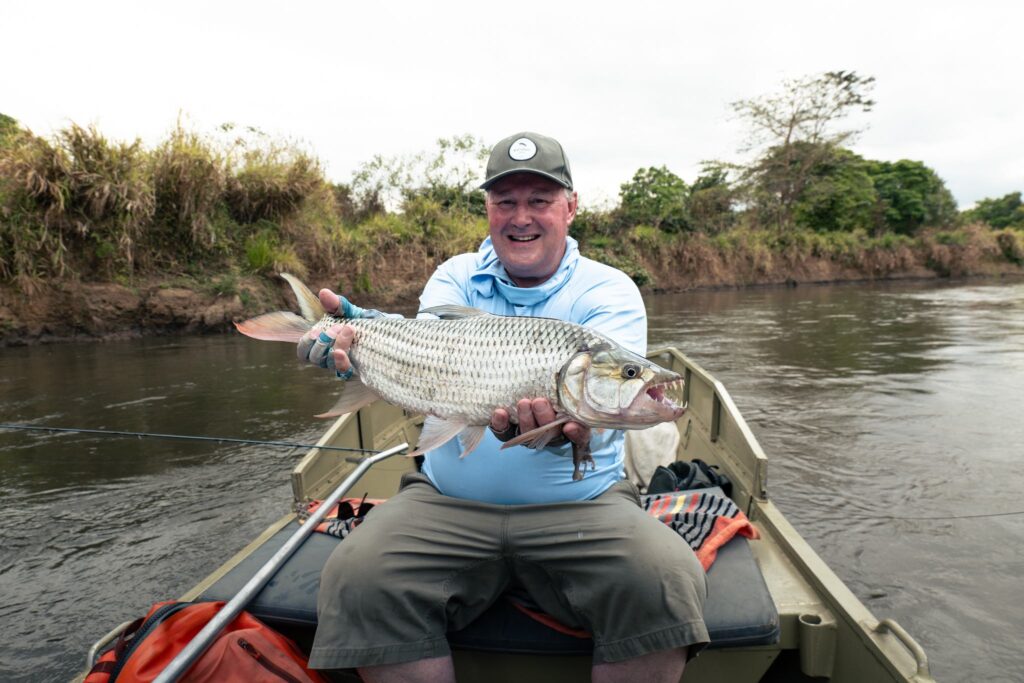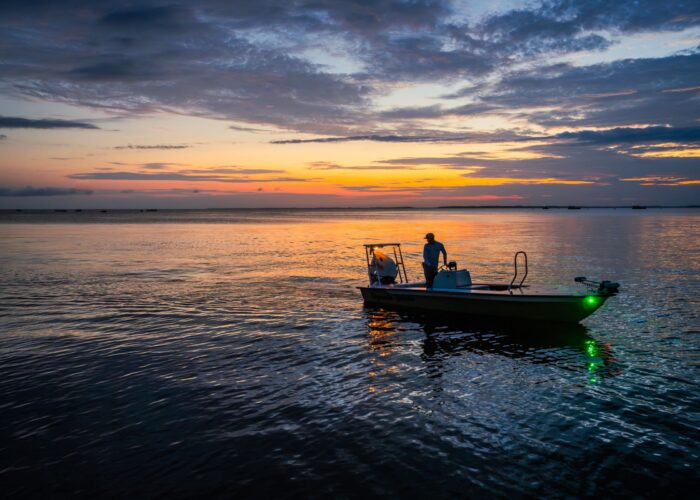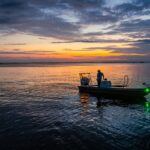Blue Tigerfish
The week started with a new team of anglers settling in, tackle prepped, and spirits high. Everyone was eager for the first full day on the upper beat. After a quiet morning, Ronin’s fly was suddenly smashed beside the boat in an explosion of water and teeth. The blue tigerfish launched clear of the river—so close it nearly landed on deck. It’s safe to say everyone was wide awake after that. Several fish followed, including a solid 12-pounder that capped off a great start.
Why They’re Called Blue Tigerfish
Among the tigers of the Mnyera and Ruhudji Rivers, some display an extraordinary deep blue sheen along their flanks. These are the famed Blue Tigerfish—not a separate species, but a colour variation of Hydrocynus tanzaniae. The hue tends to show in older fish that hold in the deeper, oxygen-rich channels. Combined with the mineral composition of these rivers, it gives them that remarkable metallic blue tone. When sunlight hits the scales just right, they look almost illuminated—a sight that every angler remembers.
The Sandbar Photo Tradition
Some guests were curious about why we take photos off the boat. The answer is simple: it’s safer for the fish. On the sandbars, the fish can be supported gently in the water, breathing between photos and avoiding any damage from hard surfaces. The guides always select shallow, clear stretches where visibility is excellent and keep a close watch on the surroundings. It’s all part of keeping these fish healthy and ensuring they swim away strong.
A Rapid Session to Remember
Mark and Riley spent a day exploring upriver and found themselves at a stretch known as Double Up. They’d already had a few smaller fish when, right against the bank, the river erupted. Line screamed off the reel as Mark held on, and after a tense fight, a beautiful 14-pound tigerfish came to the net. Landing one of that size on foot in such wild surroundings is always something special.
Weather Shifts and Changing Luck
The first few days were testing, with a large pressure system settling over the valley each morning and keeping the bite slow. Despite the conditions, everyone worked hard and still managed a few good fish. When the camps swapped over midweek, the change in weather brought the river back to life. The tigers switched on, feeding aggressively and rewarding every ounce of effort.
The Challenge of a Tigerfish Mouth
Few fish are as tricky to hook as a tigerfish. Their mouths are built mostly of hard bone, with very little soft tissue for a hook to grip. A late strike or a second of slack line, and the fly comes free. Add in their powerful jumps and head-shakes, and it’s easy to see why every fish landed feels like a real achievement.
A Rare Wild Dog Encounter
One morning on the Ruhudji, the team was treated to a rare sight—two African wild dogs trotting along a sandbar. They moved closer, curious about the boat, before melting back into the bush. It was a moment that stopped everyone in their tracks. These sightings are special not only for their rarity but also for what they represent: a thriving ecosystem and a truly wild place.
Another unforgettable week on Tanzania’s rivers—beautiful Blue Tigerfish, tough fishing, and moments that remind us why we keep returning. If you’ve ever dreamt of chasing these fish in one of Africa’s wildest settings, start planning your trip and experience it for yourself.

